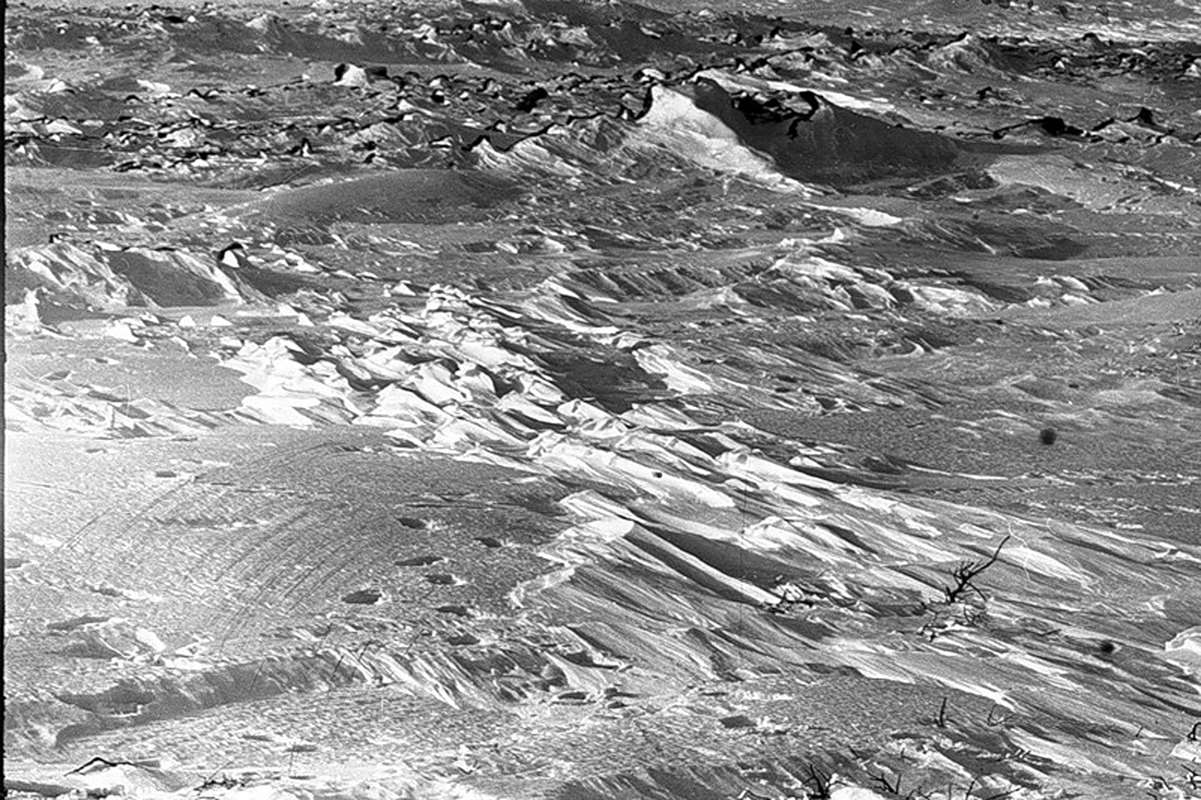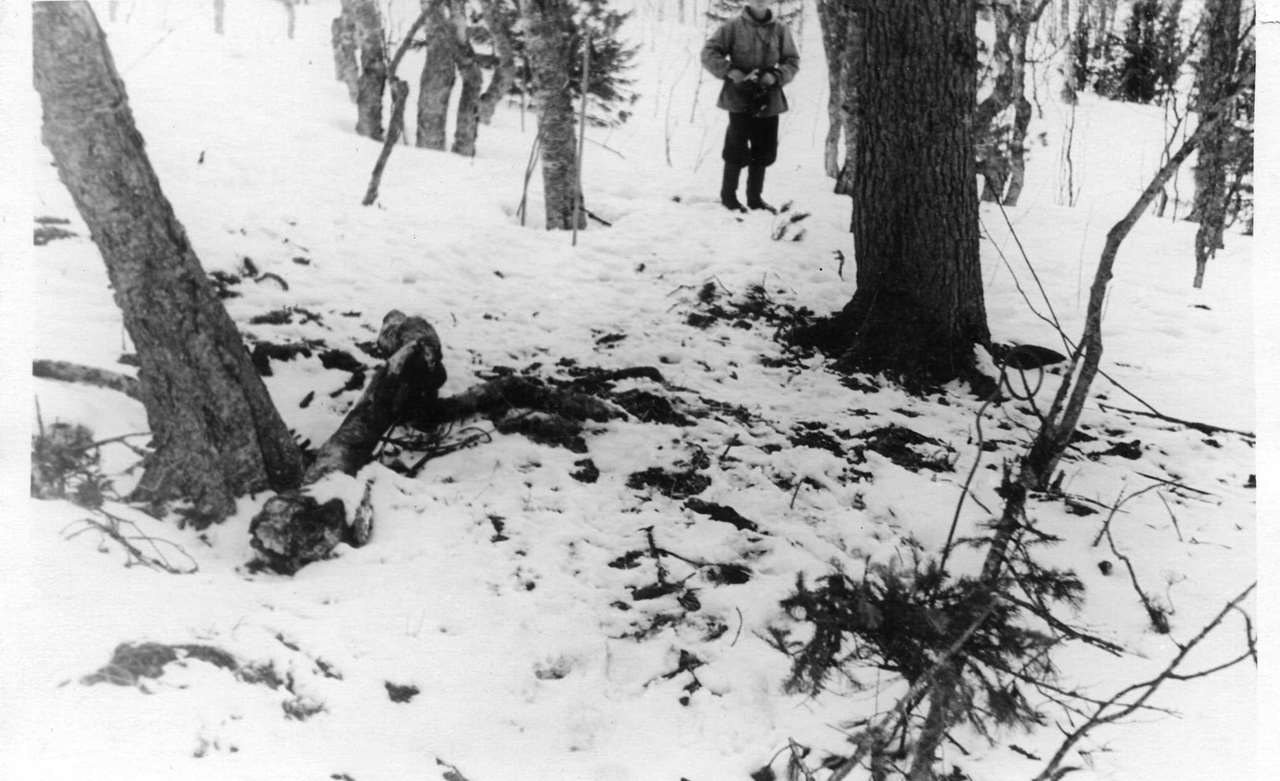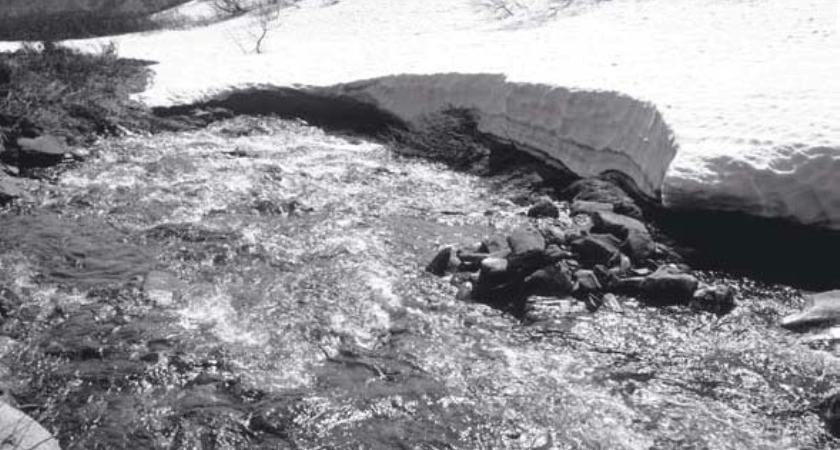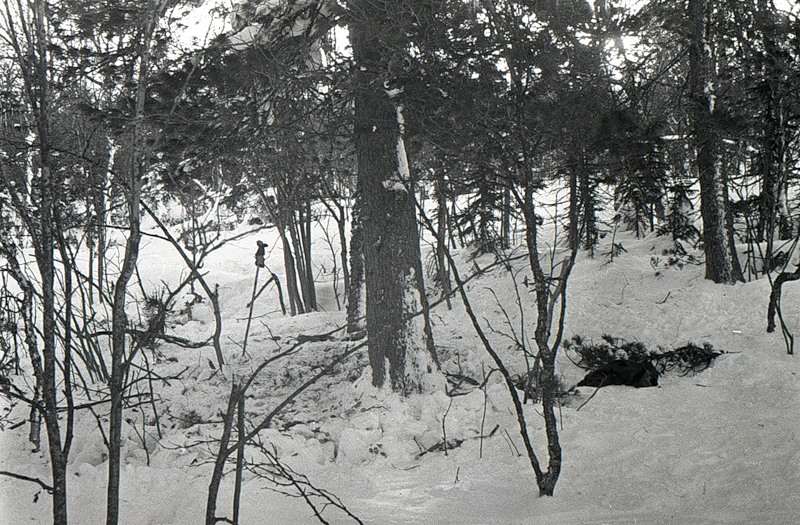
Once again, about how it all went down
Ural Stalker 12.2010. Author Sergey Sogrin
A lot has already been written about the chronicle of the events of those days and the search operations, which almost completely corresponds to reality, the role of each of its participants. However, it is worth returning to them. This is necessary for understanding and restoring the true picture of what happened. The analysis of publications made it clear to me that some key moments of those events and details remained without attention and publicity.
It was they who gave the opportunity at the time to reconstruct the events of that tragic night to Evgeniy Maslennikov (the first Master of Sports in Sverdlovsk and chairman of the Federation of Tourism) and the author of these lines, who by that time had extensive experience in winter taiga and polar hikes as a participant and leader.
So, 1959 February. Panic in UPI. Dyatlov's group of hikers did not return. Some groups are still on hikes. Our group returned from the Subpolar Urals. Before I had time to unpack my backpack, Rudik Sedov, a participant in our expedition, now a Honoured Master of Sports and Master of Sports of International Class in tourism, came running. "Seryoga, there's panic at the institute, Dyatlov hasn’t returned, rescue efforts are being organised. Lev Gordo, chairman of the UPI sports club, is urgently asking you to come. We're rushing to the institute. Indeed, Lev Gordo is completely at a loss. What to do? Search teams are already being assembled, the military department and the trade union committee have been brought in. But where to send the teams? Having familiarised myself with Dyatlov’s route, I propose dropping landing parties at the key points of the route to establish the fact of their presence there, and then localising efforts in the most probable area, excluding the entire 200-kilometer route. Please contact Evgeniy Maslennikov and ask him to lead the search efforts, as an authority on Sverdlovsk tourism and someone with extensive experience in organisational work. He was then the chief mechanic of the Verkh Isetsky metallyrgical plant. I myself fly with Stanislav Tipikin and Moisey Akselrod to Mount Otorten - this is the first point on the route where you can find something.
We did not find any traces of Dyatlov's presence on the summit or in the area, which we inform the helicopter flying above us with a conventional signal. Then the helicopter comes again and announces with a signal rocket: "Receive a canister" We read: "Slobtsov's group on the slope of Mount 1079 found an empty tent. Prepare for evacuation."
It was later that Mount 1079, with the light hand of journalists, became "Mountain of the Dead," and not "Dead Mountain" called by the Mansi due to the lack of vegetation.
In Ivdel, the hotel is already full of familiar and unfamiliar people. Here is Evgeniy Maslennikov. He offers me the role of an expert and consultant in the search operations, since he himself does not have the opportunity to stay here for long.
We fly to the site. There are a lot of people, more than some officials. The guys from Slobtsov's group meet us and take us to the place of the found tent. The inspection of the "scene of the crime" begins - it turns out that an investigator from the prosecutor's office is with us. The role and purpose of the others' trip is not yet clear. The investigator is doing his job. Maslennikov, the hikers and I are conducting our observations.
What are the first impressions? The tent is set up on a safe, very gentle slope. Above it, there is no avalanche zone, since the slope flattens out and turns into a horizontal watershed of the ridge. The snow is blown away by the wind almost to the ground, covering up the unevenness. The tent withstood the wind and snowfalls for more than 20 days. People left the tent instantly under the influence of some very strong fright and fear, which haunted them for a relatively long time, since sobering up did not come in the first minutes of flight, and people went far down the slope.
From the tent to the valley there are traces in the form of columns 10-20 cm high. with footprints, where the absence of shoes is clearly visible. The steps are wide, of a running person, at intervals in a row. There are no extraneous traces of people or animals around the tent. All things, documents remained in the tent.
We followed the tracks and here we found bare polished drip ice on the stones, formed from underground groundwater coming out. In the summer, this is swampy high-mountain tundra in a rocky bed. I encountered something similar on Denezhkin Kamen. There are no traces and cannot be, since bare ice sparkles here all winter long. The section is quite long. It is impossible to walk along it. We go around it.
- 2 -
The hikers accompanying us switch everyone's attention to the cedar in the valley where they found the two people. Now all interest is focused on this place. It is clear that they ran away down. There is more snow, creeping bushes and birches appear. No one pays attention to the surroundings anymore. Everyone is interested in the cedar where the main tragic events were supposed to take place.
Maslennikov and I decided to take a closer look at the place where the hikers could have slid down the ice. Maybe some things fell out that could tell us something. (The observation skills of a pathfinder were instilled in me by the excellent teacher A.A. Arzamastsev, with whom I studied from the 6th grade in the society of young geographers and regional studies "Globus" in the Sverdlovsk Palace of Pioneers).
Here we also pay attention, but for now we do not attach much importance to this fact, that the nature of the tracks has changed. They have become crowded, one track merges with another, the steps are short. For now we attribute this change to deeper snow. By that time, nothing was known about the fate and condition of the 5 members of the group. Rustem Slobodin and the four in the ravine were still not found.
Near the cedar we see how there was a desperate struggle for life, for survival. The lack of clothes of Krivonischenko and Doroshenko required a solution, as did the location of the others.
And then the monotonous everyday life of search operations began. The military mine detectors did not give results. I remembered that in the warehouse of sports equipment of the institute I saw a bundle of avalanche probes, it is unknown how they ended up there. They brought them and taught the searchers how to work with them.
After some time, Lev Ivanov called me to the prosecutor's office to work with the investigation as an expert.
At the end of March, I left for Ivdel as the head of another group to continue the search work, where another mysterious phenomenon awaited us.
Many years later, in the early 70s, I met I.D. Bogachev, a master of sports in mountaineering, in the Pamirs. He worked in Moscow at some secret research institute. In the evening, by the fire on Lake Iskander Kul, we were talking about mountains and people. I told him the story of Dyatlov, to which he answered me verbatim the following: "In those years, we dropped spent stages of rocket carriers into uninhabited areas of the Northern Urals, and Dyatlov became a victim of this." It was impossible to ask more questions, he worked, as they said then, in the "box". So he said too much.
The mystery and the solution to the "Fireballs"
Today there is no mystery of this phenomenon. A very accurate explanation is given in the article by Evgeniy Buyanov and Boris Slobtsov in the January 2009 issue of the Ural Pathfinder.
And then in 1959, when we witnessed this phenomenon in the conditions of search operations and where our friends had recently died, it made a strong impression of the unknown and helplessness in the face of this element.
It so happened that I managed to observe this rocket launch from Baikonur on March 31 from beginning to end. From a bright star that flared up on the horizon, turning into an orange-yellow ball the size of the Moon with blurred edges, to the appearance of a bright dot in the center moving away from the "ball". What is this dot? This is the same spent stage of the launch vehicle that should enter the dense layers of the atmosphere and burn up or some of its fragments should reach the ground and not just anywhere, but in the region of the Northern Urals. The rocket launch trajectory went up, and to the NW, but since it was projected on the sky, there was a feeling that this "ball" was flying horizontally and very low above the Earth. And this impression increased anxiety.
A few years later I had the chance to observe a similar phenomenon again, being in the mountains of the Zailiysky Ala-Tau. But then the next day there was a message: "In the Soviet Union, from the Baikonur cosmodrome, the N satellite was launched..."
It was after this that it became clear what we observed that night of March 31, 1959 and what could have put the boys to flight that tragic night.
- 3 -
Reconstruction of the events of the night of January 1-2, 1959
(According to Evgeniy Maslennikov and Sergey Sogrin)
Based on all that has been stated, the events of that tragic night seemed to us as follows.
The Dyatlov group pitched the tent well and competently. Nothing foreshadowed the tragedy. The weather, the frost - it's been worse. Tomorrow is Otorten. We went to bed.
In the middle of the night or in the morning, the entire area is illuminated by a bright light, maybe simultaneously or later there is a growing noise, a hum, a whistle with such frequency that the ears can't stand it. There is panic in the tent, turning into fear of an imminent catastrophe, death in fire. Driven by this feeling, everyone gets up, whoever was in what they were wearing, and jumps out through the cut tent flap, those who were in the back, and through the exit.
The head refuses to make sober decisions. The instinct of self-preservation kicks in. No one thinks about the consequences. The only way to save yourself is to run and leave this place as quickly as possible, there is no time to dress or put on shoes, only to run. Even if a sober head was found: "Stop, where are you going!" - no one hears it. The laws of crowd psychology are in effect. "I'm like everyone else!" - seized by a general panic.
And the whole group runs down the slope in a wide front (Remember, the tracks of a running person are up to a meter long). They continue to be pursued by the "Fear Factor" - that's what we will call this phenomenon for now.
After 300 meters or less - more (this is not important) the group gets onto those same ice patches, bare ice about 150-200 m long, now it is already difficult to recall it. Even with an insignificant steepness of this slope - this is a disaster. But the slope has already become steeper than near the tent.

A kurumnik (rock scattering) with traces of the Dyatlov group in the foreground
Remember the icy conditions in Sverdlovsk, when people fly up on a smooth sidewalk, doing incredible somersaults, and then the hospitals are overflowing with fractures and concussions. I was a victim of this in my youth. "Stars fell out of my eyes," and a large scar remained on my temple for life.
It is clear that no one could walk on this section, some fell, some flew up, slipped and fell with their whole body on the ice. And everyone, randomly spinning and turning over, rushed down, like on a New Year's ice slide, picking up quite a decent speed. Only here they are thrown and tossed on the bumps and stones of the natural relief.
I had to experience something similar when I got into an avalanche in the Central Tien Shan. As a result of all these tumbling, flying and throwing, although he remained on the surface of the avalanche, he received serious injuries. To make it more convincing, I would like to give an example of a case on Lenin Peak. In the 70s, while climbing, a Bulgarian climber slid down a relatively safe snow slope, which did not foreshadow a tragedy. Well, he would have rolled into a trough and that's it. However, on the way there was a single stone sticking out above the surface. A blow to the head is fatal.
The stones were also protruding on this ice. A blow is possible (as it is written in one of the expert opinions, equivalent to a moving car). Only this car was the man himself.
Having flown through this section in seconds, the entire group was thrown onto the snow. This entire path from the tent should have taken a few minutes. The "fear factor" most likely still haunts them. But now it is greatly enhanced by the tragedy of the group's situation. It turned out that there were casualties, and seriously, possibly even unconscious (Kolya Thibeaux-Brignolle).
What to do? Return to the tent? How? There is no way up the ice. We need to find another way. Transporting the casualties up is hellish work, beyond the strength of such a small group. In addition, it is cold in the tent, it is cut, there is no way to warm up there. That night it was about -30 degrees. And then in the snowy darkness of the night or in the light of the "Fear Factor" below, among the sparse forest, a huge cedar is visible as a dark silhouette. This is some kind of salvation - this is a fire, this is warmth. Someone accidentally had matches.
And the whole group, supporting the victims, moved towards the saving tree (Remember, the changed nature of the tracks. Densely, close to each other, even trampling the neighboring track). Here the group no longer runs (the tracks are short), moves slowly, accompanying the victims. Most likely, the terrible impact of the "Fear Factor" has disappeared. The realization of what happened comes, it is necessary to fight for life.
- 4 -
How did the group behave? Was there an alternative? Yes and no. They had not gone far from the tent. It was no more than 400-500 m, not 1.5 km as to the cedar. If there were no victims, they could have returned to the tent, collected some things and gone to the upper reaches of the Auspiya to the previous night's campfire. Even if there had been frostbite, it would have been possible to save themselves. Maybe not everyone would have made it. I think that no one had an alternative to abandoning the victims and thus saving themselves healthy, and then carrying this "cross" for the rest of their lives. It is not in the rules of hikers, and especially such a friendly and similar group as Igor Dyatlov's, to abandon their comrades. There was no choice. In this situation, they demonstrated their highest moral qualities. The injury of part of the group later led to the death of all.
And so the group in full force reaches the cedar. First of all, it is necessary to arrange the victims. They can be placed in the nearest ravine in the dead zone from the wind. Thin trunks of fir trees are cut and a flooring is made. Everyone works together. Krivonischenko and Doroshenko are trying to get firewood. The only source of dry firewood is the lower branches of the cedar. With incredible efforts, they prepare them by climbing the tree and, hanging on the branches, break them off with the weight of their bodies, falling down with the prey.
According to our observations and conclusions, it was not possible to light a full-fledged fire. The cedar branches were too thick. As far as I noticed, there were no heavily charred branches, they were more sooty from the weak fire of the kindled fire. It is possible that the heat from the fire, rising upward, caused the snow to fall from the cedar branches and buried the hope for a saving fire forever. And the matches ran out.

A fire pit near the cedar. Behind the log were the bodies of Yuri Krivonischenko and Yuri Doroshenko. At the near end of the log there is a strange bottle
At some point, Igor takes a desperate, heroic step to go up to the tent and bring things and some equipment, wait by the fire until morning and take measures to save the group. Krivonischenko and Doroshenko are busy with the fire. Kolevatov with the victims. Rustem can go with Igor - he is the most athletic and trained of all with a large margin of safety. Knowing Zina's character, we can say that no force could stop her from participating in this rescue attempt to reach the tent. Perhaps she refused to stay with the victims instead of Kolevatov.
On the way to the tent, Rustem Slobodin and Zina Kolmogorova are exhausted and freezing. Igor Dyatlov unsuccessfully climbs higher. Even for us, dressed and shod during the search, it was not so easy to get up and find a tent in these vast spaces.
What can we then say about Igor's desperate attempt at night in the bitter cold and wind to find a tent naked. He turns back to the cedar, to the fire (his pose indicates this), which is no longer there. Perhaps he even sees that there is no fire near the cedar. Having spent his last strength, he freezes 300 meters from the cedar, leaning it against a frail birch.
Meanwhile, having lost all hope of getting fire, having spent incredible efforts on this, Krivonischenko and Doroshenko, as the forensic scientist assessed, freeze in the pose of a very tired person. Kolevatov, having found them frozen, cuts off their clothes and uses them to save the others, but they freeze too, some sooner, some later.
By the 20th of February, when the search began, the wind and snow had done their job. The tent was partially covered, the snow on the slope was blown away, leaving columns of compacted snow from the tracks. Slobodin and Kolmogorova were covered with snow. The mass grave in the ravine was blown and covered with 4 meters of snow. And when the snow began to melt in April, this mass moved four people in the ravine from the flooring. We must not forget that 1 m3 of wet snow weighs up to 800 kg. This force and the water in the stream that washed the bodies could have caused additional injuries.
I think some small details differ from the true picture. But this will forever remain a secret that the Dyatlov group took with them.
There is one weak and vulnerable point in our conclusions, and a reason for opponents to challenge them. And was there a launch from Baikonur on 02.02.59 of a satellite or a rocket? The official answer: "No." No other answer could have been expected in those years. This is confirmed by the refusal to admit to the launch on March 31, which was witnessed by the entire search team. We received a negative answer to our request, and that our stay there was not in danger.
In defense of the fact of the launch of a satellite or a rocket on 02.02.1959, I can cite one argument, which, I understand perfectly well, has no evidentiary basis. When I returned from the search operations and told my father about the flight of the "ball." He thought about it and said: "Perhaps, on February 2, I saw such a thing in the sky." He did not know that Dyatlov died on that very day. We had a private house. And the rules required us to clear snow from our property. And my father would sometimes do this at night or early in the morning before leaving for work.
Unfortunately, the very charming man Evgeniy Maslennikov, with whom I had the chance to be friends and then collaborate in the search for the truth of this tragic story, is no longer with us. But no one asked our opinion anymore. The investigation no longer needed us.
- 5 -
Who is to blame? And what to do next?
In conclusion, I would like to refer to the brilliant article by Dmitriy Tiunov in the January 2009 issue of "Ural Stalker". In it, for the first time, I felt such a sober and reasonable approach to this topic, which delighted me.
It was he, albeit timidly, who alone expressed the idea that the group members could have received injuries "during a normal fall on a rocky slope." And he was not far from the truth, he just lacked the information to say it loudly and convincingly.
It was he who convincingly showed that there was no testing ground for secret weapons on Mount Kholat Syakhl and in its vicinity.
It was he who convincingly rejected all the versions with special forces, with cleanups and murder.
It was he who explained that those who launched the missile were not guilty of anything, because, directing the missile through uninhabited areas, they could not have known that Dyatlov, or Sogrin, or a Mansi hunter would be there at that time.
All this is a matter of chance. It so happened that the time and place coincided at this very point, on the pass that is now named after Dyatlov.










